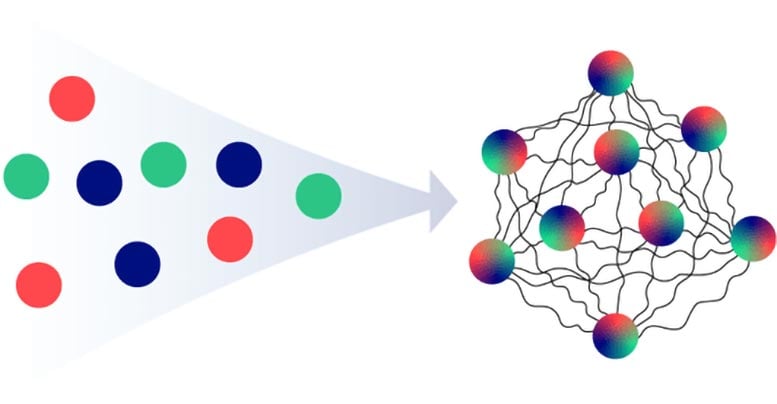- Courses
- GS Full Course 1 Year
- GS Full Course 2 Year
- GS Full Course 3 Year
- GS Full Course Till Selection
- Online Program
- GS Recorded Course
- NCERT (Recorded 500+ Hours)
- Polity Recorded Course
- Geography Recorded Course
- Economy Recorded Course
- AMAC Recorded Course
- Modern India, Post Independence & World History
- Environment Recoded Course
- Governance Recoded Course
- Science & Tech. Recoded Course
- International Relations and Internal Security Recorded Course
- Disaster Management Module Course
- Ethics Recoded Course
- Essay Recoded Course
- Current Affairs Recoded Course
- CSAT
- 5 LAYERED ARJUNA Mentorship
- Public Administration Optional
- ABOUT US
- OUR TOPPERS
- TEST SERIES
- FREE STUDY MATERIAL
- VIDEOS
- CONTACT US
Neutrinos - The Ghost Particles That Make Up Our Universe
Neutrinos - The Ghost Particles That Make Up Our Universe
- Researchers studying neutrinos in supernovae and neutron star mergers have discovered that neutrinos (also called 'ghost particles') can become quantumly entangled, leading to chaotic (a state of complete disorder) behavior.
- Quantum entanglement is a phenomenon where the two particles (such as a pair of photons or electrons) link together in a such a way that no matter how far apart they are in space, their state remains the same/linked.
- A supernova is what happens when a star has reached the end of its life (star runs out of fuel) and explodes. Each blast is the extremely bright, super-powerful explosion of a star.
China is building the world’s largest “ghost particle” detector below the South China Sea.
What is a ghost particle?
- Neutrinos are similar to electrons but have no charge, like neutrons. They are among the most common particles in the universe, with trillions of them passing through us every second.
- In recent studies, scientists have discovered that neutrinos have a very small mass.
- Because neutrinos have a weak charge and minimal mass, they are extremely difficult to detect.
- They only interact with other particles on rare occasions, making them almost invisible. This elusiveness (state of being difficult to detect) earned them the name "ghost particles."
- Every time atomic nuclei come together (like in the sun) or break apart (like in a fission reactor), they produce neutrinos.
Neutrinos and their ability to change identity

In dense neutrino environments like core-collapse supernovae, these different types of neutrinos start to interact with each other. Through these interactions, the neutrinos become entangled, meaning their behaviors and properties become linked, even though they are separate particles. Because of this entanglement, over time, neutrinos of different flavors end up with similar amounts of energy, reaching a kind of balance or equilibrium. Essentially, the differences between the flavors even out in these dense environments.
Fig: Neutrinos of different “flavor” quantum states (shown by colors) are entangled through interactions.
|
In dense neutrino environments like core-collapse supernovae, these different types of neutrinos start to interact with each other. Through these interactions, the neutrinos become entangled, meaning their behaviors and properties become linked, even though they are separate particles. Because of this entanglement, over time, neutrinos of different flavors end up with similar amounts of energy, reaching a kind of balance or equilibrium. Essentially, the differences between the flavors even out in these dense environments. Fig: Neutrinos of different “flavor” quantum states (shown by colors) are entangled through interactions. Credit: Felix Sanchez |
- Neutrinos have an interesting ability: they can change their "flavors" or identities.
- Neutrinos come in three different types, called flavors—electron, muon, and tau. When they move or interact with other particles, they can switch between these flavors.
- In extreme environments like core-collapse supernovae (which are massive star explosions) or neutron star mergers, neutrinos start interacting with each other a lot more which leads to quantum entanglement.
- Quantum entanglement is a concept in physics where particles become connected in such a way that the state of one particle instantly influences the state of another, no matter how far apart they are.
- In the case of neutrinos, this means that their flavors or identities become linked.
- Even if two neutrinos start out different, after interacting in these dense environments, they can become entangled, and their properties (like flavor) start influencing each other.
- In simple terms, neutrinos can change their identity during interactions, and in places like supernovae, they can even form deep connections (entanglements) with other neutrinos, affecting how they evolve and behave together.
What is meant by Neutron Star Merger?
|
How Do Scientists Detect Ghost Particles?
- Though neutrinos rarely interact with other particles, they sometimes collide with water molecules. For this reason, China is building its neutrino telescope underwater.
- Researchers detect neutrinos by observing the byproducts they leave behind after passing through water or ice. These byproducts (known as "muons,") emit flashes of light.
- Advanced underwater telescopes can capture these flashes, offering scientists a way to study the energy and origins of neutrinos.
- Currently, the largest neutrino detector is the IceCube telescope, located deep in Antarctica and managed by the University of Wisconsin-Madison. This telescope covers 1 cubic kilometer.
- China's new telescope, called "Trident," will cover 7.5 cubic kilometers in the South China Sea.
- The sheer size of Trident will allow it to detect more neutrinos, making it 10,000 times more sensitive than existing underwater telescopes. The project has already begun, with completion expected within this decade.
Why Is Detecting Ghost Particles Important?
- Unexplained Behaviour: Although neutrinos are abundant, scientists don't fully understand why neutrinos defy (go against) some established laws of physics.
- Unclear Origins: The origin of neutrinos is still unknown, with some theories suggesting they played a significant role in the early universe, shortly after the Big Bang.
- Solving Scientific Mysteries: Understanding neutrinos may help answer unresolved scientific questions, such as the origin of cosmic rays.
- Link to Cosmic Rays: Identifying the source of neutrinos could lead to the discovery of where cosmic rays originate.
- Understanding the Universe's Beginnings: Growing evidence suggests neutrinos are key to understanding the origins of the universe. The Trident telescope could bring us closer to uncovering these secrets.
Most recent Supernova: SN 2023ixf
|
Must Check: Best IAS Coaching In Delhi
UPSC Prelims Result 2024 Out: Expected Cut Off & Other Details, UPSC Prelims 2024 Answer with Explanation, Daily Prelims Quiz, Daily Current Affairs, MONTHLY CURRENT AFFAIRS TOTAL (CAT) MAGAZINE, Best IAS Coaching Institute in Karol Bagh, Best IAS Coaching Institute in Delhi, Daily Mains Question Answer Practice, ENSURE IAS UPSC Toppers, UPSC Toppers Marksheet, Previous Year Interview Questions, UPSC Syllabus




